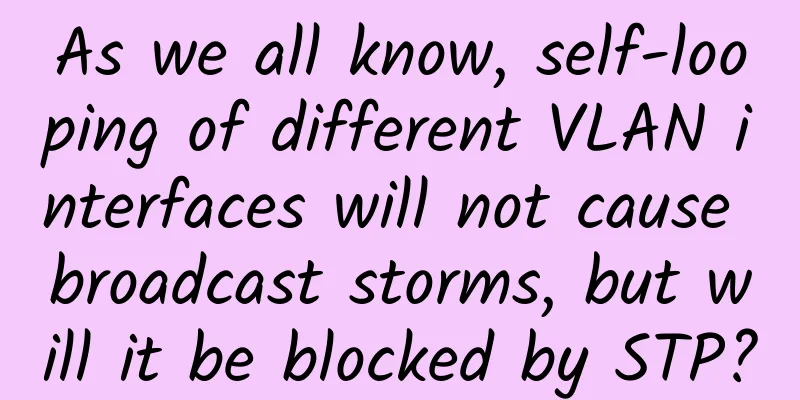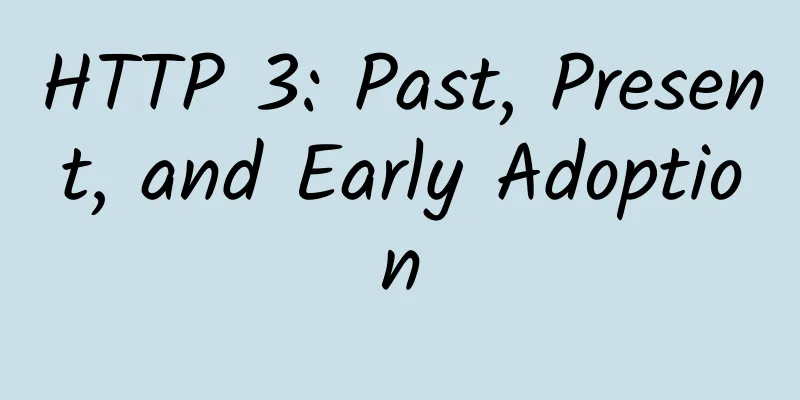As we all know, self-looping of different VLAN interfaces will not cause broadcast storms, but will it be blocked by STP?

|
Take a simple topology: In this topology, G0/0/1 and G0/0/2 of SW1 belong to different VLAN1 and VLAN2 respectively. Both ports are connected to the fool switch at the same time, which is equivalent to a "physical self-loop", but in fact there is no logical loop. This kind of self-loop network will not generate a broadcast storm, as shown in the following figure: After the broadcast packet enters port 1, it will be marked with the default tag 1, that is, it will not be forwarded to port 2 of VLAN2, and no loop storm will occur. In this case, if the switch enables the STP function, will one of the two ports be blocked? Before explaining this problem, let's simulate it. Building the topologyIn this example, the topology is simulated by eNSP. The switch enables STP mode, port 1 is configured as Access VLAN1, and port 2 is configured as Access VLAN2. Wait for the topology to converge and check the final status of the spanning tree convergence: It can be seen that port 2 is blocked in the end. The STP priority is "slightly better". Port 1 has a higher priority, so blocking port 2 is in line with expectations. But obviously, the STP protocol does not care whether ports 1 and 2 belong to different VLANs. Even if there is no loop in the logical topology, the protocol will block it. This result does not meet the psychological expectations of the general users and is considered "false blocking". Why is this the case? Principle AnalysisThe basis for STP protocol convergence is the interaction of BPDU messages. After the switch port enables STP, BPDU is sent out by the port, and the BPDU sent out by each port is different. BPDU messages are encapsulated in 802.3/LLC frame format, which is slightly different from the common Ethernet datagram 802.3 Ethernet 2 frame format: The BPDU of STP and RSTP does not contain VLAN information, so the spanning tree protocol does not make judgments and comparisons based on port VLANs. So how does it perform in MSTP? Convergence of different VLAN interfaces in MSTPMSTP can configure VLAN convergence in different instances in two situations: 1. Default Configuration By default, VLAN 1 and VLAN 2 are both MSTP instance 0. If both ports converge in the default instance 0, the port with the lowest priority will be blocked: 2. Configure the instanceIf VLAN1 and VLAN2 are assigned to different instances 1 and 2 respectively, the instances are converged and calculated independently, and the physical ports 1 and 2 are not blocked. The forwarding mechanism is as follows:
After the MSTP instance is configured, the BDPU message contains the MSTID field, and the interaction calculation between switches and bridges will converge based on the instance: SummarizeIt doesn’t matter if you don’t understand the above principles, just think about it slowly, but be sure to remember the following summary: Q: If STP or RSTP is enabled on a switch and different VLAN interfaces "loop" each other, will one of the interfaces be blocked? A: Yes, the port with the lower priority will be blocked. Q: What if MSTP is enabled? A: There are two situations:
|
>>: F5 redefines ADC in the AI era
Recommend
How Businesses Can Implement IoT Solutions
While the Internet of Things is changing people’s...
At the Huawei Maimang 8 launch event, He Gang of Huawei said that the greater the challenge, the greater the achievement
At the launch of Huawei Maimang 8 mobile phone, t...
5G network frequency band allocation is in turmoil again. Will the country allow spectrum resource auctions?
The recently revised "Radio Management Regul...
iWebFusion: $9.38/month KVM-4GB/30GB/2TB/Los Angeles Peer1&Psychz, upgradeable to 10G bandwidth
iWebFusion (or iWFHosting) is a subsidiary of the...
Let's talk about viewing ServiceEntry injection information in Envoy
[[431019]] introduction Istio provides ServiceEnt...
How practical is 5G for ordinary people?
5G has three main advantages over 4G: high speed,...
On the day of the Chinese college entrance examination, most of the Internet in the world was paralyzed by this "small company"
On June 8, while the college entrance examination...
Are you among the unemployed after 5G?
[[271219]] On June 6, a very special day, my coun...
The 18th China Enterprise Annual Selection List in 2023 was announced: Haowang AI Ultra-Low Light 3.0 Series won the 2023 China IT Industry Digital Infrastructure Excellent Product Award
In November 2023, the "China Enterprise &quo...
Writing crawlers has become "prison programming" because you don't understand the Robots protocol
[[386960]] It is easy to write Python crawlers, b...
IDC: Ten predictions for China's ICT market in 2021
On November 10, IDC recently released the "T...
Huawei launches new smartphone exclusively for trendy teenagers - Huawei Enjoy 10S makes you unique
This afternoon, Huawei officially released its ne...
Why does TCP use the "three-way handshake" to establish a connection? An example will teach you
First of all, why is it a three-way handshake? Af...
Virtono: €8.97/year KVM-512MB/15GB/1TB/UK data center
Virtono is a foreign VPS hosting company founded ...
Liu Yunjie: Determinism, programmability, and cloudification will become the future network trends, comprehensively improving network service customization capabilities
At the "2020 Network 5.0 Summit", when ...









